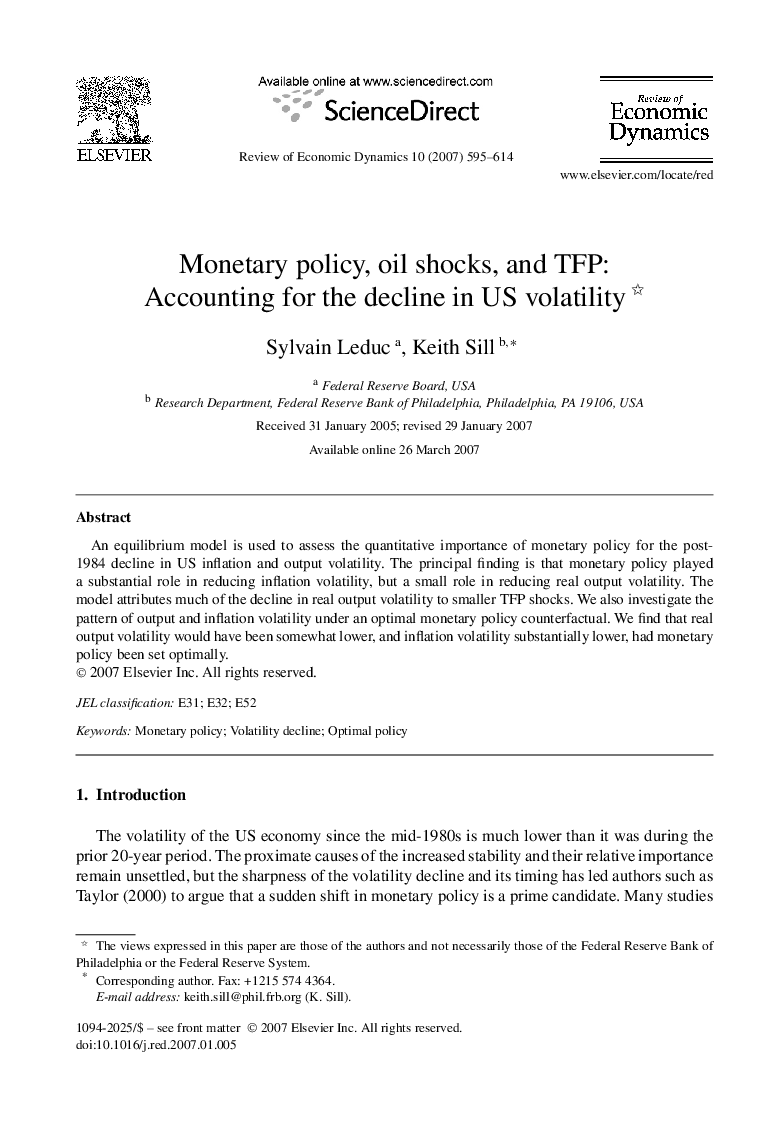| Article ID | Journal | Published Year | Pages | File Type |
|---|---|---|---|---|
| 985744 | Review of Economic Dynamics | 2007 | 20 Pages |
Abstract
An equilibrium model is used to assess the quantitative importance of monetary policy for the post-1984 decline in US inflation and output volatility. The principal finding is that monetary policy played a substantial role in reducing inflation volatility, but a small role in reducing real output volatility. The model attributes much of the decline in real output volatility to smaller TFP shocks. We also investigate the pattern of output and inflation volatility under an optimal monetary policy counterfactual. We find that real output volatility would have been somewhat lower, and inflation volatility substantially lower, had monetary policy been set optimally.
Related Topics
Social Sciences and Humanities
Economics, Econometrics and Finance
Economics and Econometrics
Authors
Sylvain Leduc, Keith Sill,
